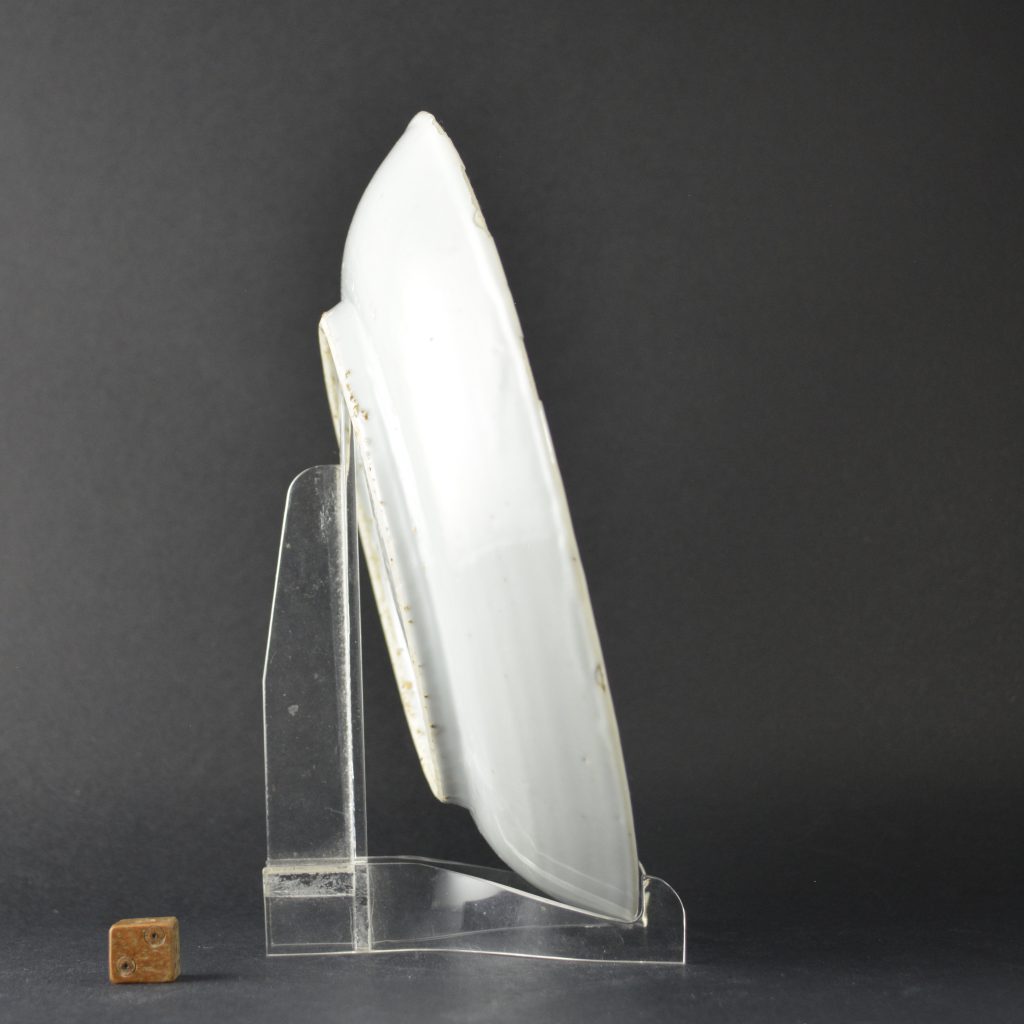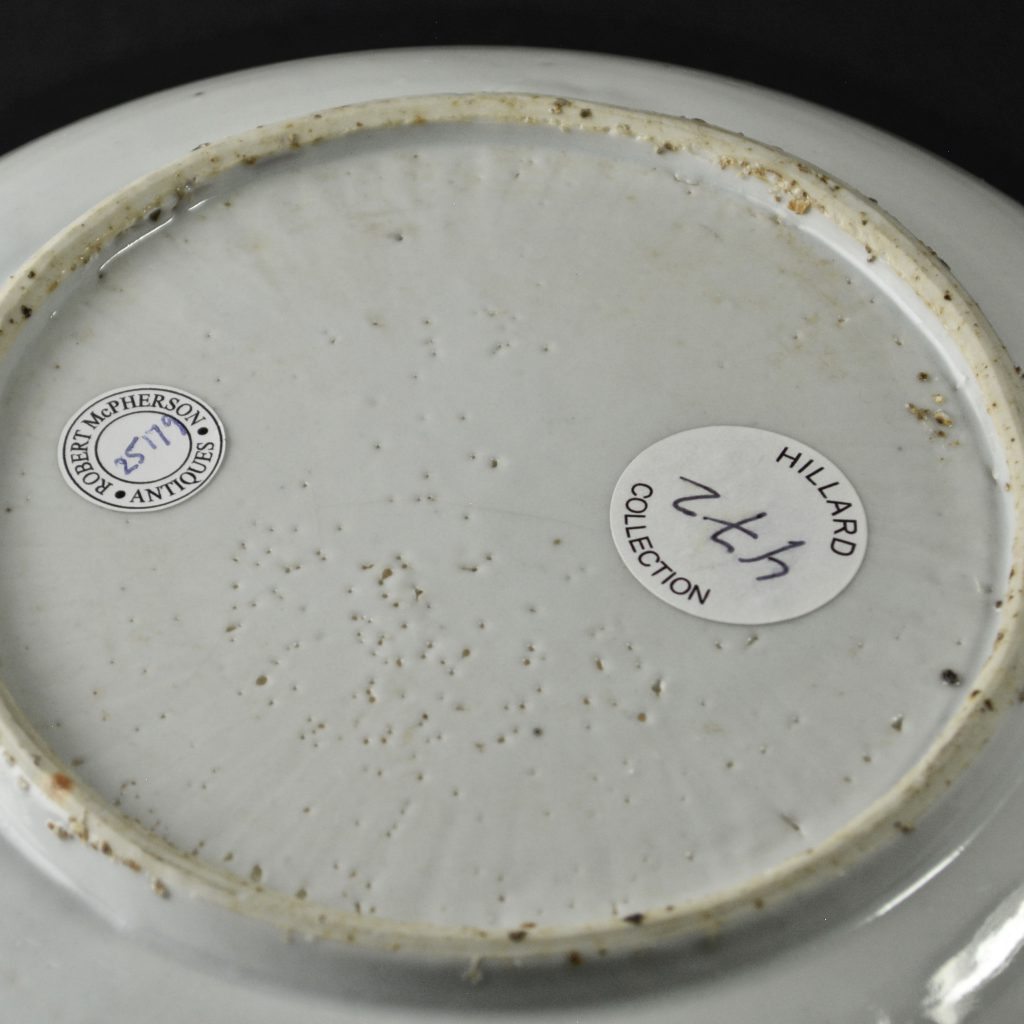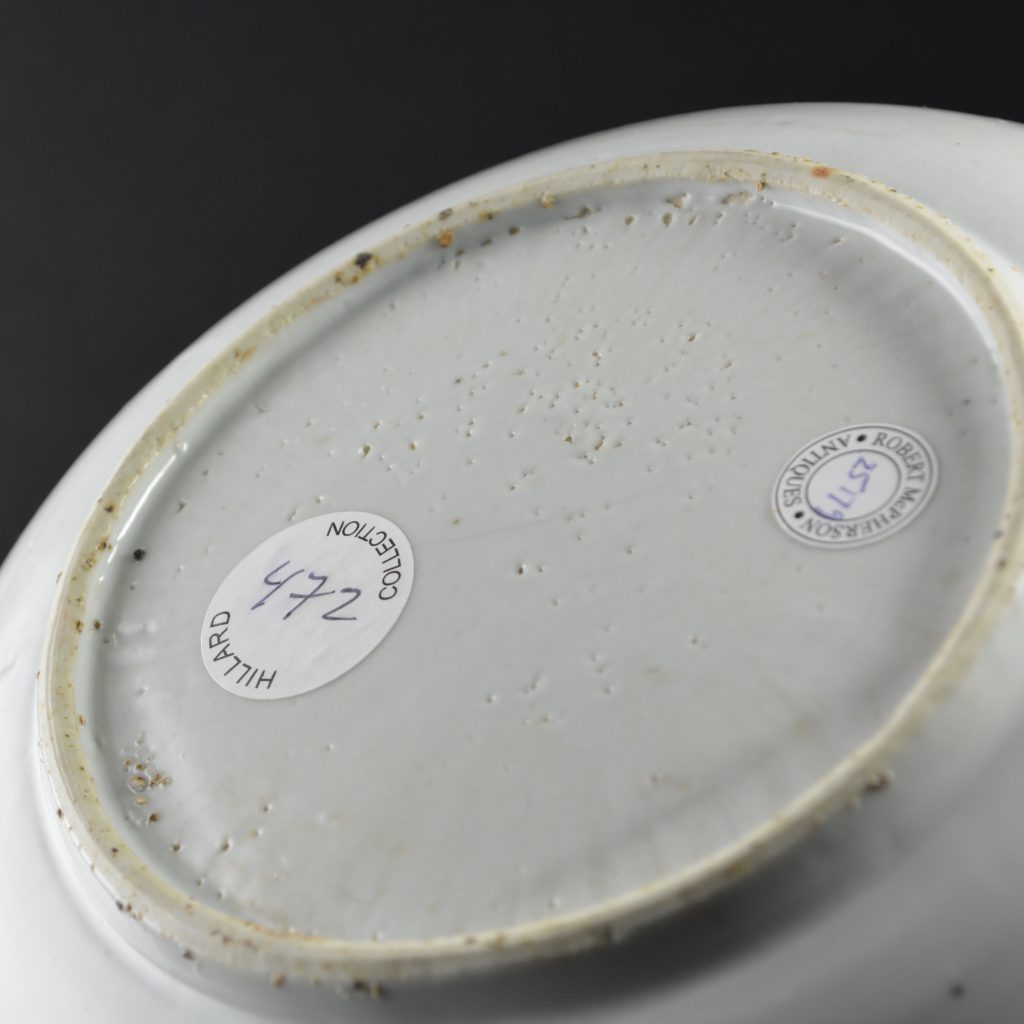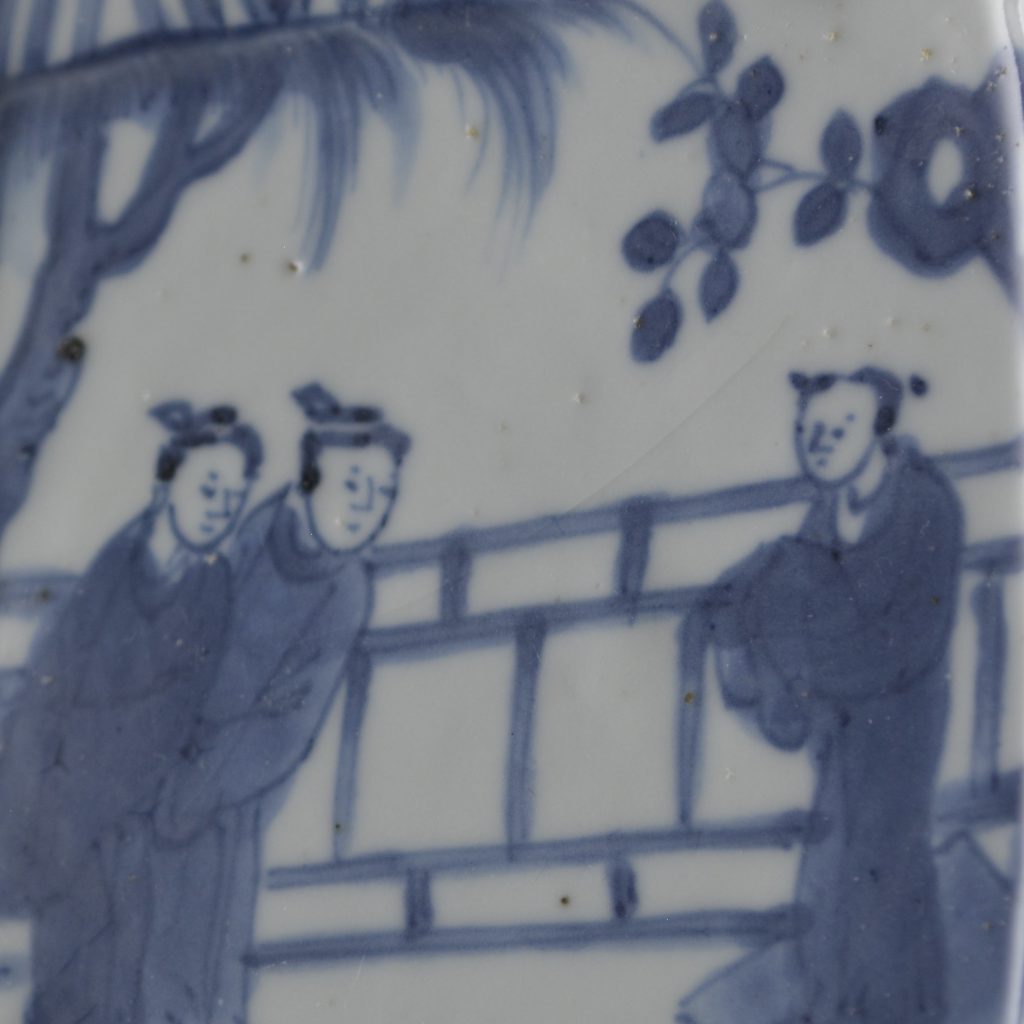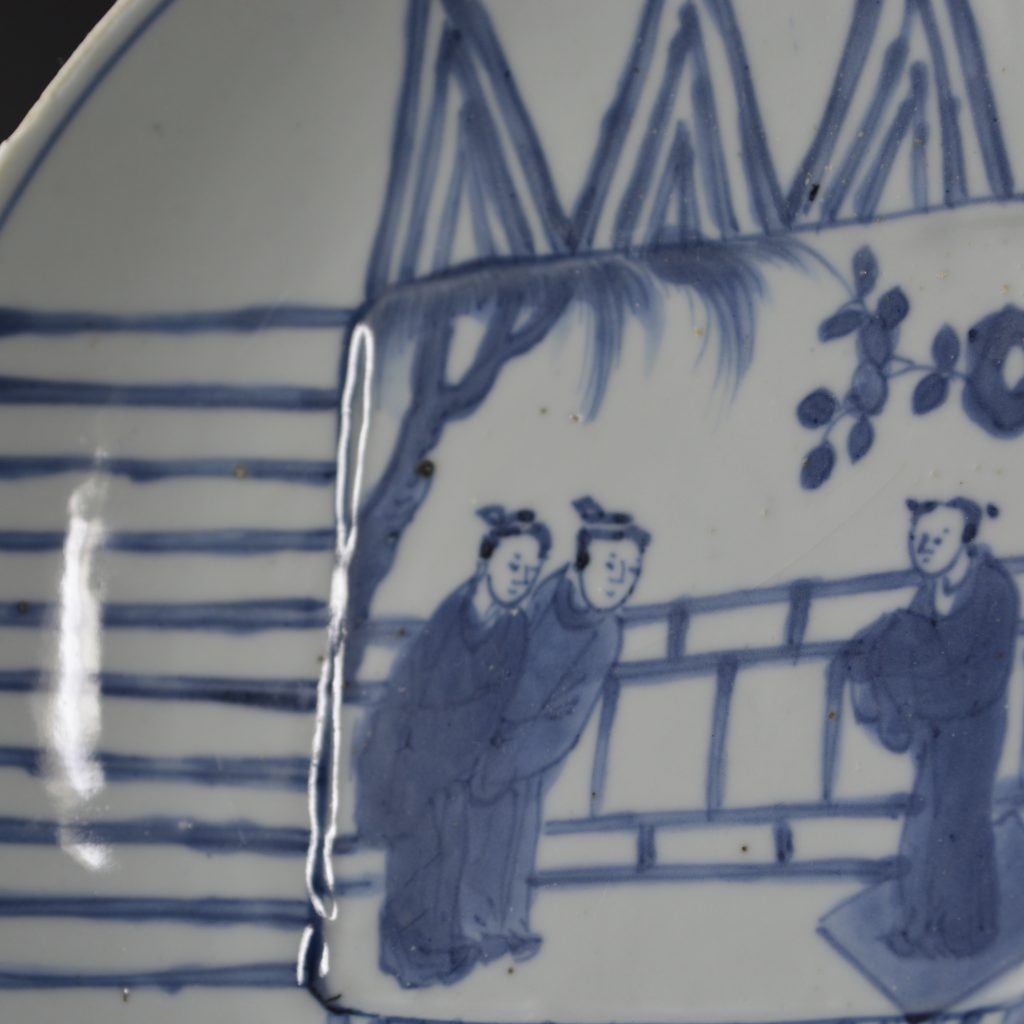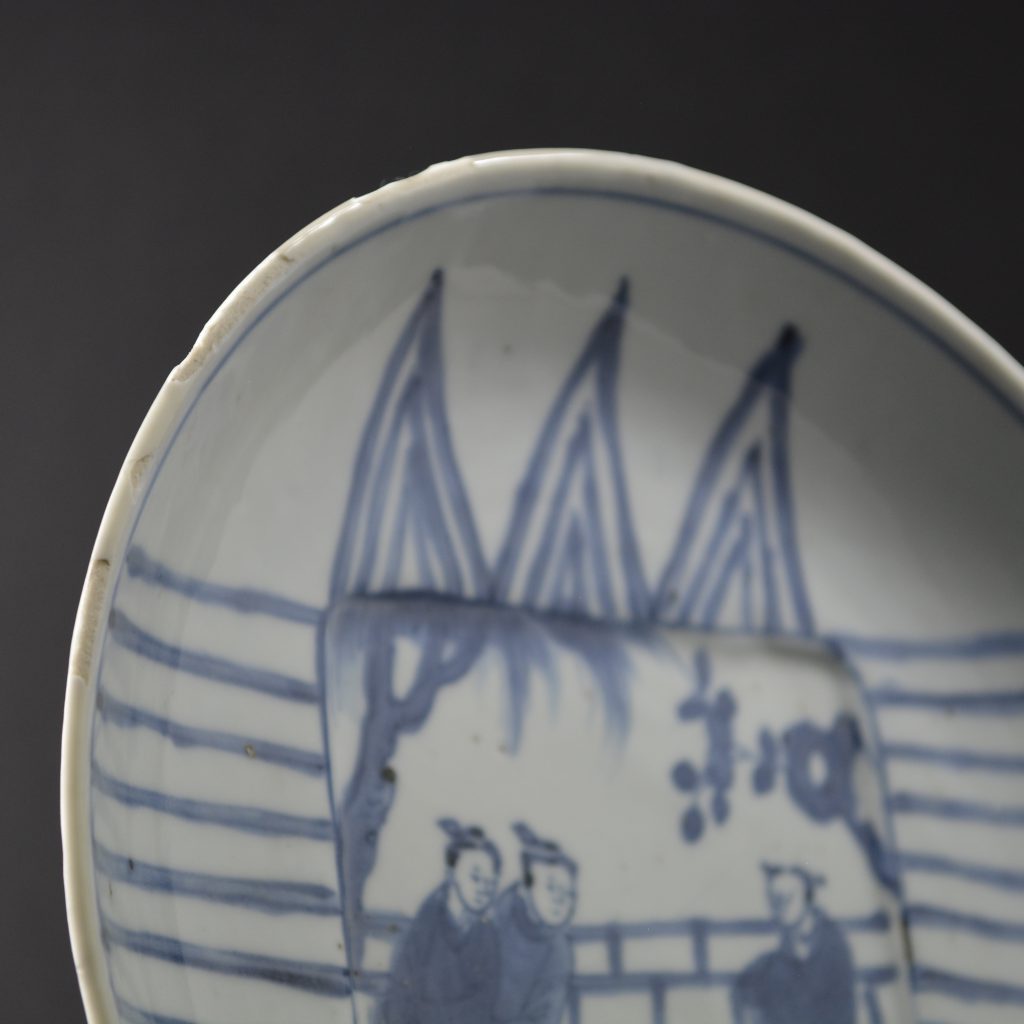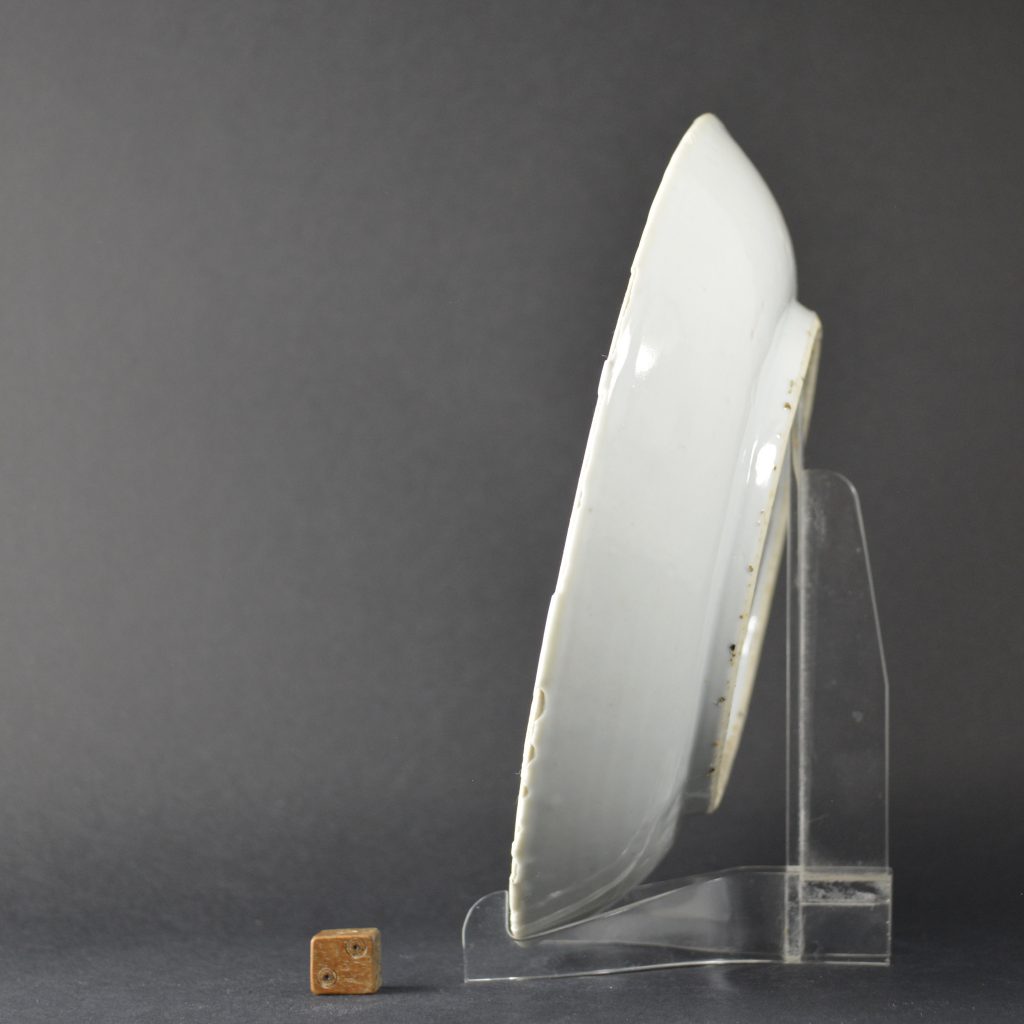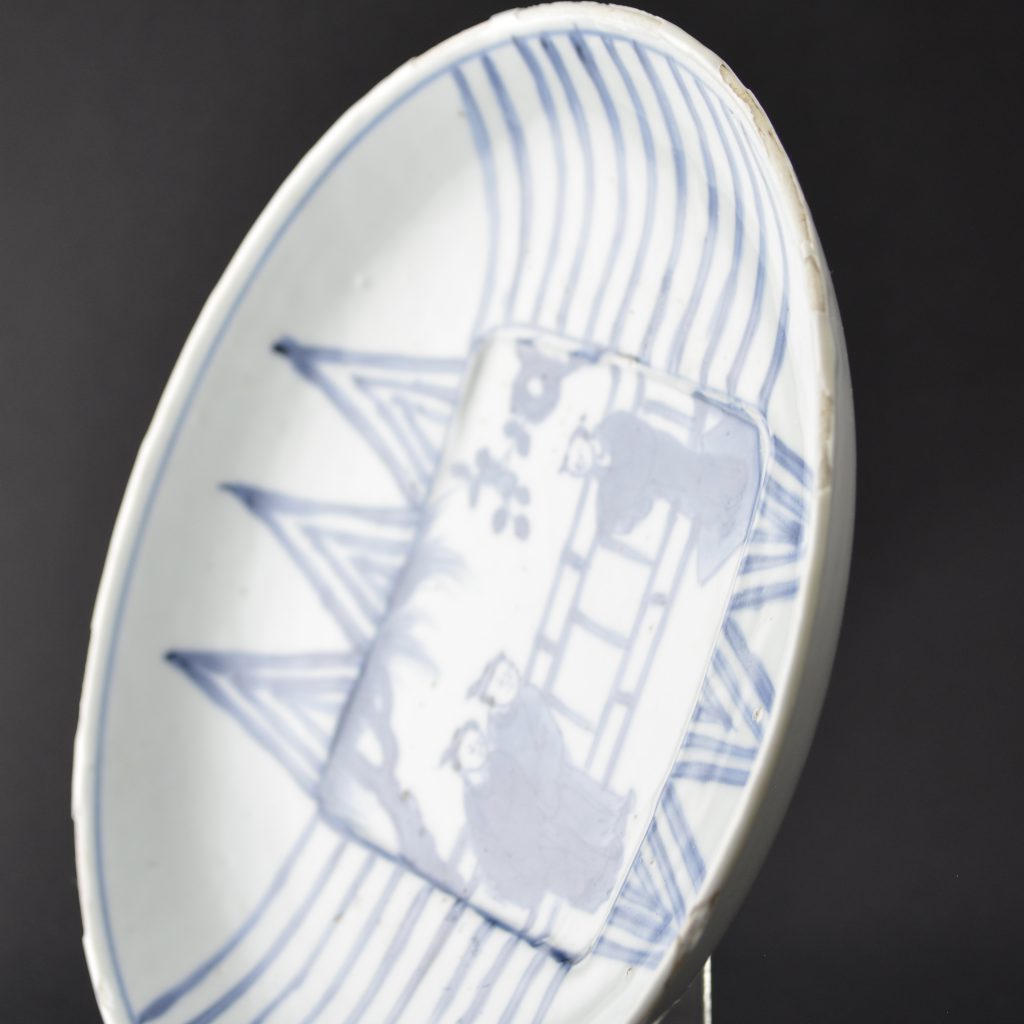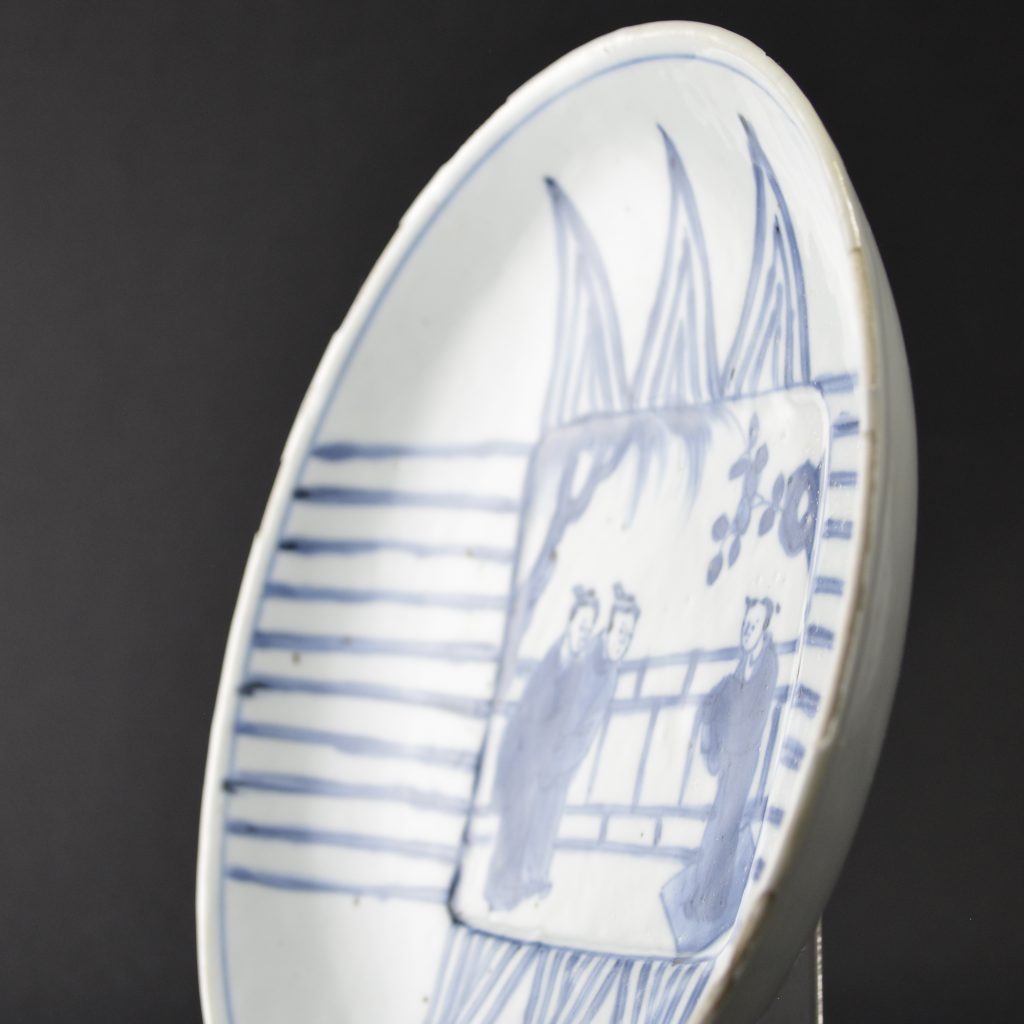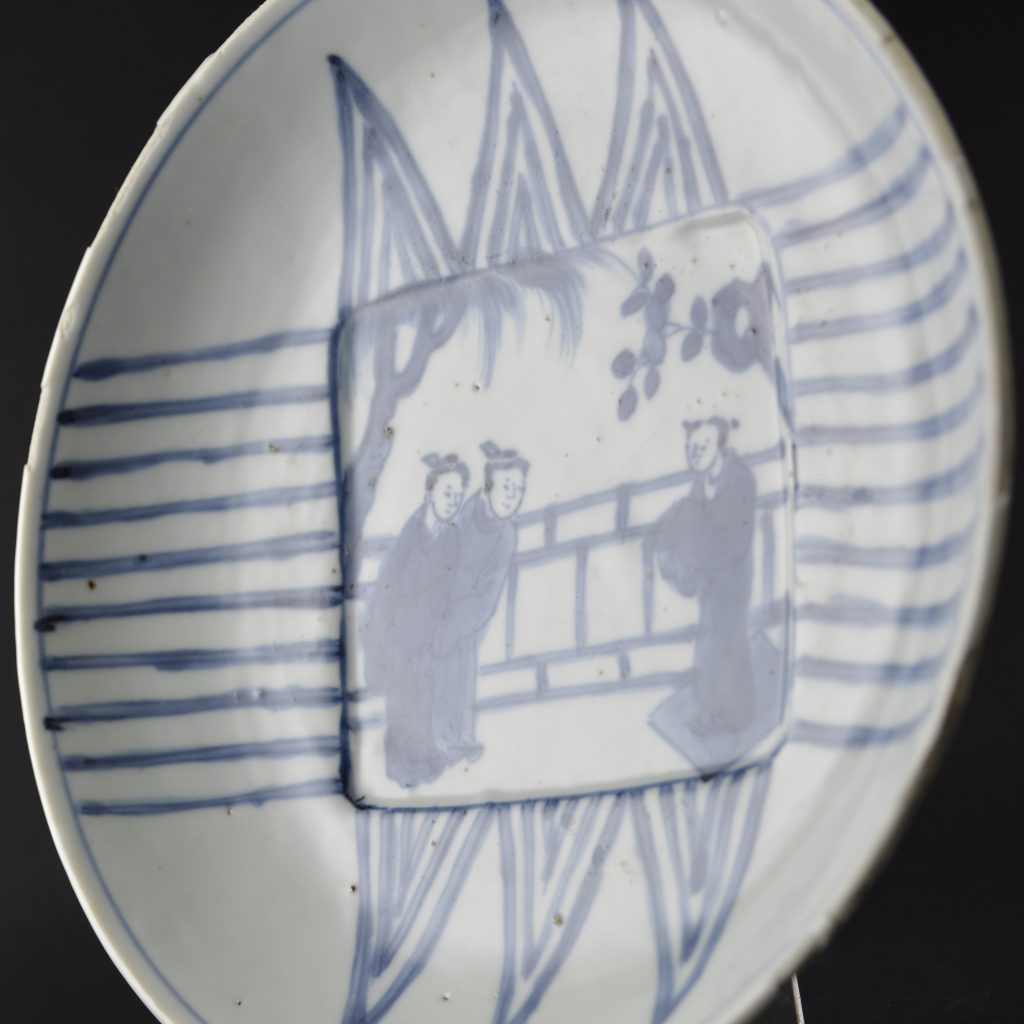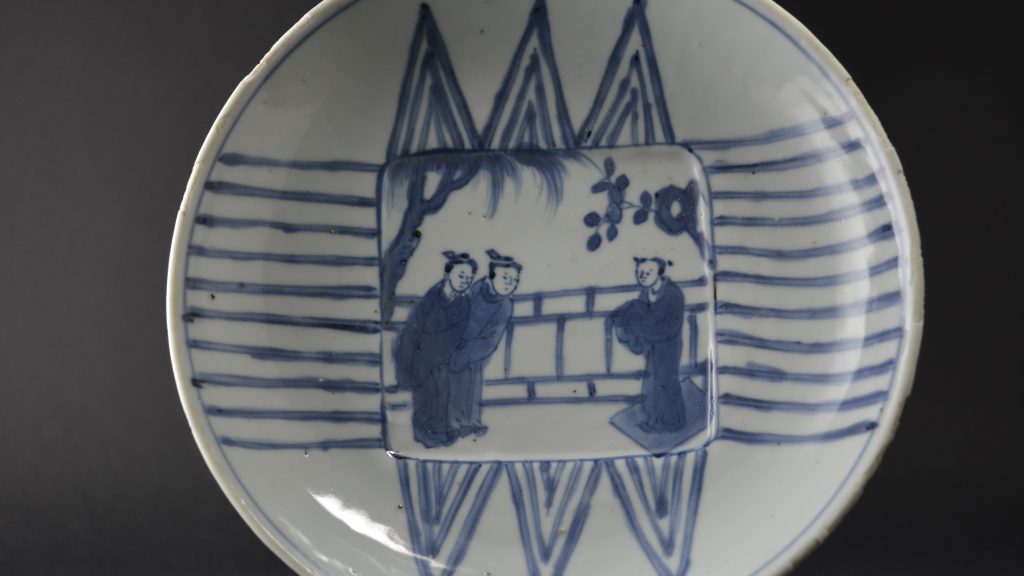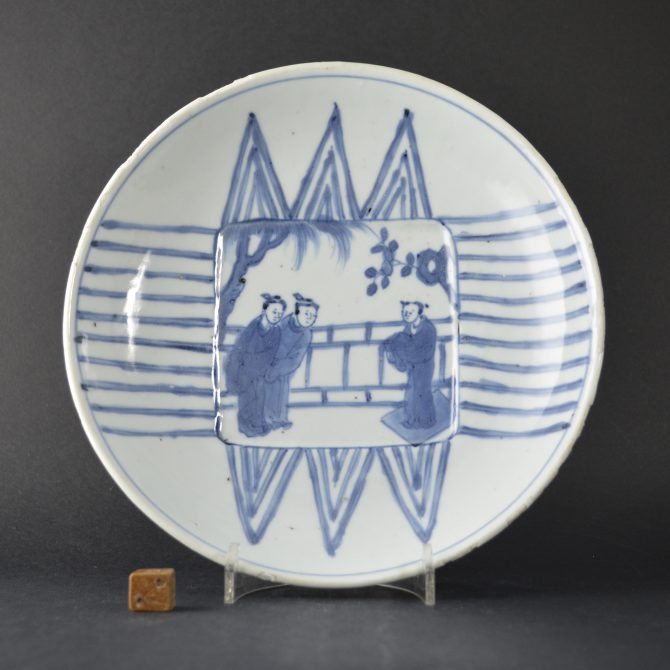
A Late Ming Porcelain Dish for the Japanese Market, Chongzhen 1628 -1644.
A Rare Ming Porcelain dish Made for the Japanese Market, Chongzhen Period 1628-1644. This unusual Ming dish was made for serving food during the Japanese Tea Ceremony, the design is probably in part based on Japanese stoneware. The center of this thickly potted porcelain dish has a concave square which is painted with two people greeting a man standing on a mat within a garden landscape. The abstract patterns around this scene are very much in the Japanese taste.
- Condition
- There is a fine crack to the well of the dish c.70mm. The rim with typical fritting.
- Size
- Diameter 18.5 cm (7 1/4 inches).
- Provenance
- The James Hillard Collection of Chinese Porcelain (America).
- Stock number
- 25179
- £ GBP
- € EUR
- $ USD
Information
Ming Porcelain for Japan :
During the late Ming Period the Chinese made a large among of porcelain for the Japanese market, it was made from the Wanli period (1573-1620) and ended in the Chongzhen period (1628-1644), the main period of production being the 1620`2 and 1630`s. The porcelain objects produced were made especially for the Japanese market, both the shapes and the designs were tailored to Japanese taste, the production process too allowed for Japanese aesthetics to be included in the finished object. Its seams firing faults were added, repaired tears in the leather-hard body were too frequent to not, in some cases, be deliberate. These imperfections as well as the fritting Mushikui (insect-nibbled) rims and kiln grit on the footrims all added to the Japanese aesthetic. The shapes created were often expressly made for the Japanese tea ceremony meal, the Kaiseki, small dishes for serving food at the tea ceremony are the most commonly encountered form. Designs, presumably taken from Japanese drawings sent to China, are very varied, often using large amount of the white porcelain contrasting well with the asymmetry of the design.
